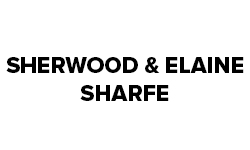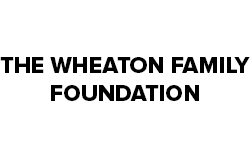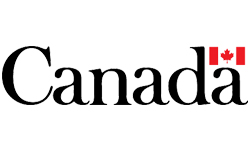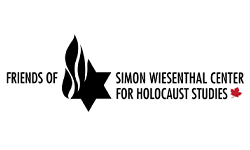Part B Learning Plan – 10 Social Studies, History, Native Studies
Inquiries are identified and connections to Big Ideas are noted. Teachers may begin with any inquiry or combine inquiries to use the approach that resonates best with their students.
Suggested inquiries may be studied in any order according to student interests.
Inquiry
What responsibility do we have to each other?
- How do make things better?
- What are the considerations when trying to redress injustice?
Big Ideas:
- Injustices, historical and contemporary, continue to exist with effects that are evident in social, economic, religious, and cultural areas.
- Humans tacitly agree to conform to the beliefs, values and mores imposed on them, implicitly and explicitly, by the various organizations of society or nations, in order to have security, stability, and predictability;
- Groups and organizations have processes and strategies to resolve differences and reach resolution so that a collective course of action can be carried out;
- Social media plays a significant role in societal and national actions; and,
- Plans to affect change for a specific social justice issue requires consideration of multiple issues.
Questions to Guide Inquiry
Essential questions and guiding questions are posed to support teachers as they facilitate students’ explorations of the inquiry. Teachers are encouraged to adjust the wording, omit or add questions as they choose.
- What is social justice?
- What is injustice?
- How do we know it is injustice?
- Why do injustices exist?
- Why do injustices exist in free and democratic societies?
- What can be done about injustice?
- What responsibility do individuals have to address injustices in society?
- How do we decide which injustice to address?
- How can engaged citizens affect positive change?
- What responsibilities do governments have to address injustices in society? How can this be accomplished?
- What are the agreements that citizens agree to adopt and support so that they can live together?
- Who is responsible for determining the parameters of these agreements?
- What happens when alternate perspectives are not considered?
- What are the processes that are used to resolve differences?
- How has time impacted current thinking on conflict resolution?
CONNECT TO TOPIC AND SURFACE STUDENTS’ THINKING ABOUT …
- Surface student thinking in response to the prompts or hook questions posed.
- Add questions from students; adjust the wording of questions as needed.
- Record student thinking for later reflection. Teachers may use a ‘Before, During, After’ strategy to note changes in student thinking.
Considering an Action Plan
This inquiry asks students to choose an issue of conflict and propose an action plan or make recommendations to address the ongoing issues. To do this, students will need to understand the social agreements that exist in power relationships and interactions, and identify alternate strategies of behaviour to achieve plausible solutions. Because this plan will take time to understand and develop, students should be encouraged to choose an area to address early in their studies so they can continue to work on their action plan through the semester.
Inquiry
What responsibilities do we have to each other? How do we make things better?
- Why do some events trigger change and some not?
- What are the considerations when trying to redress injustice?
Hook Questions – Think about… Talk about…
- How do we create positive and meaningful change?
- What are the agreements that citizens agree to adopt and support so that they can live together?
- Are all stakeholder perspectives represented?
- Who is responsible for determining the structure of these agreements?
- How are decisions made?
- What happens when alternate perspectives are not considered?
Students explore a variety of social contracts that exist to understand that in order to have security, stability and predictability in our interactions, humans tacitly agree to conform to beliefs, values and mores imposed on them by various organizations of society. Teachers will be asked to help students identify the agreements that exist between organizations and nations that allow them to work together.
In the action plan, students develop a strategy for resolution of their chosen social justice issue.
- Surfacing student thinking, posting, and then reflecting on thinking to note how thinking has changed and what has caused the changes.
- Jigsaw strategy approach: Students, individually or in groups, explore similar questions, present their findings to the group. The teacher helps students to note similarities, differences, themes. Students are encouraged to develop summary statements to clarify their thinking and describe new learning.
- Reflecting on initial thinking to note how thinking has changed. Identify evidence to support the new learning.
- What are the processes that are used to resolve differences?
- How has time impacted current thinking on conflict resolution?
Note and record student thinking; surface additional questions.
What agreements govern how citizens work together?
- What are the agreements that citizens agree to adopt and support so that they can live together?
- Who is responsible for determining the structures of these agreements?
- What happens when alternate perspectives are not considered?
- What are the processes that are used to resolve differences?
- How has time impacted current thinking on conflict resolution?
What social justice issues are students interested in?
- Possible areas of injustices:
- First Nations issues
- Gender based issues
- Environmental issues
- Socio-economic issues
- Cultural issues
Identify
- What were/are the issues?
- Identify the various stakeholders’ perspectives.
- Why are/were they significant?
- What actions were taken to make a difference/effect a change and what was the impact of those actions?
- What challenges were/are faced in trying to right this wrong?
- How has time impacted current thinking on the resolution of this issue?
- How has social media impacted the issue?
Vocabulary
- Justice
- Injustice
- Privilege
- Marginalization
- Equity
- Fairness
- What themes are emerging?
- What are the similarities and differences?
- What are the connections to the enduring understandings?
The independence level of the class, will determine how much teacher direction is required to do this.
- What are the similarities and differences between the issues?
- What themes are students noticing?
Teachers are encouraged to use the Historical Thinking Concepts constructs in exploring any of the inquiries.
Historical Significance: How do we decide what is important to learn about the past?
Primary Source Evidence: How do we know what we know about the past?
Cause and Consequence: Why do events happen and what are their impacts?
Historical Perspectives: How can we better understand the people of the past?
Continuity and Change: How can we make sense of the complex flows of history?
Ethical Dimension: How can history help us to live in the present?
DEVELOPING UNDERSTANDING
Action for Change Symposium/Inquiry
Clarify with students, reasons for choosing the issue they will be focusing on.
- Criteria to narrow their focus may include:
- relevance,
- importance,
- proximity,
- interest,
- possible impact [racial, social, economic, political],
- urgency,
- timeline,
- likelihood of success,
- available resources (Might need to examine the availability of resources before moving forward)?
Action Plan to Affect Change
For your particular Social Justice issue, research and identify:
- Stakeholder and the issues from stakeholders’ perspectives
- What has already been done?
- What can be done?
- What are the short term and long term targets for change?
- What skills/resources do we need to affect this change?
- What allies can I access?
- What barriers will I face?
- How will this help my own growth? (intellectual, moral, spiritual and/or social)
In reporting and reflecting upon their process in addressing a specific social justice issue have students:
A.
- Explain, examine, and evaluate their strategy for change.
- Identify the impact of their actions.
B.
- What criteria did you use in choosing your specific social justice issue?
- What were the root causes of the issue?
- Where did you find your information?
- What criteria did you use in selecting the action you took?
C.
- What success did you have?
- What challenges did you experience?
- What are the barriers to implementing change?
D.
- Who has a vested interest in maintaining the status quo, and why?
- What are the implications of change for all stakeholders (those with power, those seeking change, those indirectly affected, etc)?
E.
- What would you do differently next time?
- How did your thinking about the issue evolve during the process?
- What are the next steps you will take?
APPLY AND EXTEND KNOWLEDGE
- Have the students assess the impact of their actions. Did they achieve the desired results? What more needs to be done?
- Conduct the Action for Change Symposium as a class.
- Explore the relationship between economic, social, and environmental efficiencies and the responsibility of Canadian citizenship.
Possible Inquiry Questions for Extension
- Do citizens have an obligation to get involved in all social justice issues?
- What is needed to encourage people to get involved in social justice issues?
- How do citizens determine which social justice issues to undertake?
- What influence does social media have in resolution of current social justice issues?
EVIDENCE OF LEARNING
How has their thinking changed from their initial thinking?
What evidence do they have to support their thinking?
- What do you think now about…?
- What has caused your thinking to change?
- What evidence supports your thinking?
- Why is this information important to know?
- How will you use this information?
Inquiry
What responsibility do we have to each other?
How do make things better?
- Why do some events trigger change and some not?
- What are the considerations when trying to redress injustice?
- How does the process change when higher levels of government become involved? e. regional vs. provincial vs. national
Social Justice Issue Reflection
For each prompt give your reasons and explain your thinking.
- How would you rate your resolution of your social justice issue?
- What were you most pleased about?
- What continues to cause you concern?
- What needs to change in order for you to achieve a stronger resolution?
Additional Inquiry Questions for Assessment:
- Can all social justice issues be resolved satisfactorily?
- Do citizens have an obligation to get involved in all social justice issues?
- What would be your criteria for satisfactory resolution of social justice issues?
- What is required from the Canadian citizens in order for successful resolution of social justice issues to occur?
- What are some of the barriers that keep citizens/people from becoming involved in social justice issues?
- Injustices of today have roots in the past.
- Canadian society is challenged to manage the co-existence of diverse worldviews.
- Canadian citizens work to achieve a balance between rights and responsibilities through learning and action.
- Canadian society has inequities and elimination of these is beneficial for all Canadians.
- For each individual, becoming aware of racism in Canadian society is an evolutionary process and a precursor to change.
- As citizens of local, national, and global communities, Canadians are conscious, self-reflective, and critical of their own beliefs and actions and seek to make positive change.
- Citizens show flexibility of mind.
- What is social justice?
- What is injustice?
- How do we know it is injustice?
- Why do injustices exist?
- Why do injustices exist in free and democratic societies?
- What can be done about injustice?
- What responsibility do individuals have to address injustices in society?
- How do we decide which injustice to address?
- How can engaged citizens affect positive change?
- What responsibilities do governments have to address injustices in society? How can this be accomplished?
- What are the agreements that citizens agree to adopt and support so that they can live together?
- Who is responsible for determining the parameters of these agreements?
- What happens when alternate perspectives are not considered?
- What are the processes that are used to resolve differences?
- How has time impacted current thinking on conflict resolution?
STUDENT CITIZENSHIP JOURNAL OPPORTUNITIES
Students are keeping a Citizenship Journal to reflect upon their developing views of citizenship. This section provides prompts for student journals. Students are invited to choose one that interests them or propose their own. Students can also respond to any of the essential questions.
Students are encouraged to respond using a variety of genres.
- How much did you think about human rights before this inquiry?
- What role does privilege play in human rights?
- What is required for true equality?
- What surprised you about your learning?
© 2024 Concentus Citizenship Education Foundation Inc. All Rights Reserved.










